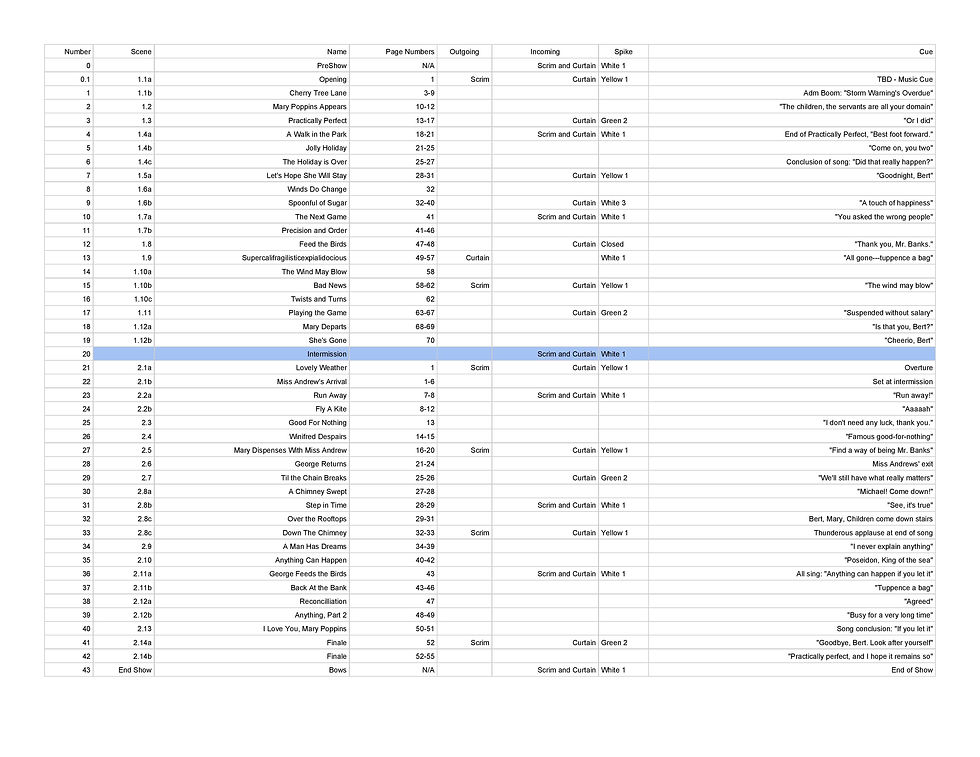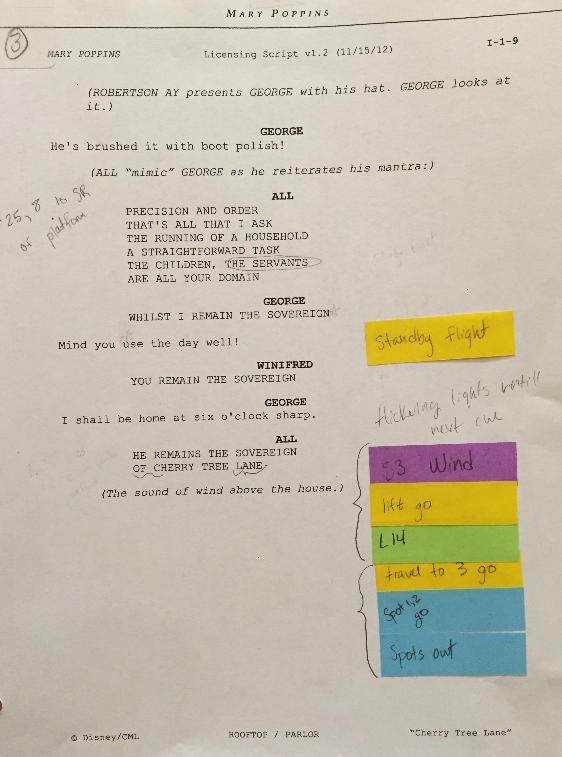





Sanity Spreadsheets
For me, especially when stage managing, avoiding chaos is all about organization. Here are two examples of some of the spreadsheets I utilized in order to help everyone keep track of their duty during the show. I had a crew of 18 for Mary Poppins, each assigned to a specific duty. Our set mainly consisted of three giant wagons that fit backstage with only 6 spare inches of space, so every set change had to be carefully choreographed to avoid catastrophe. Even the curtains and scrim movments had to be synchronized with the set changes.
Crew Checklists
Continuing my theme for organization, in order to be sure that every job was completed pre and post show, I created lists that had to be initialed by a crew member. I would check these lists before house open and before letting the crew leave for the evening. There was a separate list for the flight crew, who had their own specific duties related to the safety of our actors.
Nightmare Cues
Anyone who has stage managed a show knows that it is inevitable for them to have what I call "nightmare cues"---cue sequences that require precise timing, usually in conjunction with several other cues of a various nature (sound, lights, flight, curtain, spots, etc).
Because I believe the ability to manage these cues successfully demonstrates a great organizational aptitude as well as the ability to maintain multiple ongoing aspects of a show, I have included some examples of cue sequences that I called during our production of Mary Poppins.
For further details about the pages, see each slide.
Mary Poppins
Stage Manager, Theatre Lawrence 2014

This is the page for Mary Poppins' first entrance of the show. As you can see, I have color-coded the different cues. For this sequence, I had 2 light cues, a spot cue, 2 flight cues, and a sound cue. This was called in time to the music within the scene.

This page is from the kitchen scene (where it magically repairs itself). I had to call cues for each magic effect in addition to light cues and spot cues (one for each effect). These were called on movement cues based on the actress playing Mary Poppins and had to be very precisely timed.

This is the cue page for the end of the show. Mostly, the light cues had to be specifically timed based not only on the actors' lines, but on Mary's appearance in the background to ensure that the areas of the stage remained isolated for the proper lighting effect.

This is the page for Mary Poppins' first entrance of the show. As you can see, I have color-coded the different cues. For this sequence, I had 2 light cues, a spot cue, 2 flight cues, and a sound cue. This was called in time to the music within the scene.